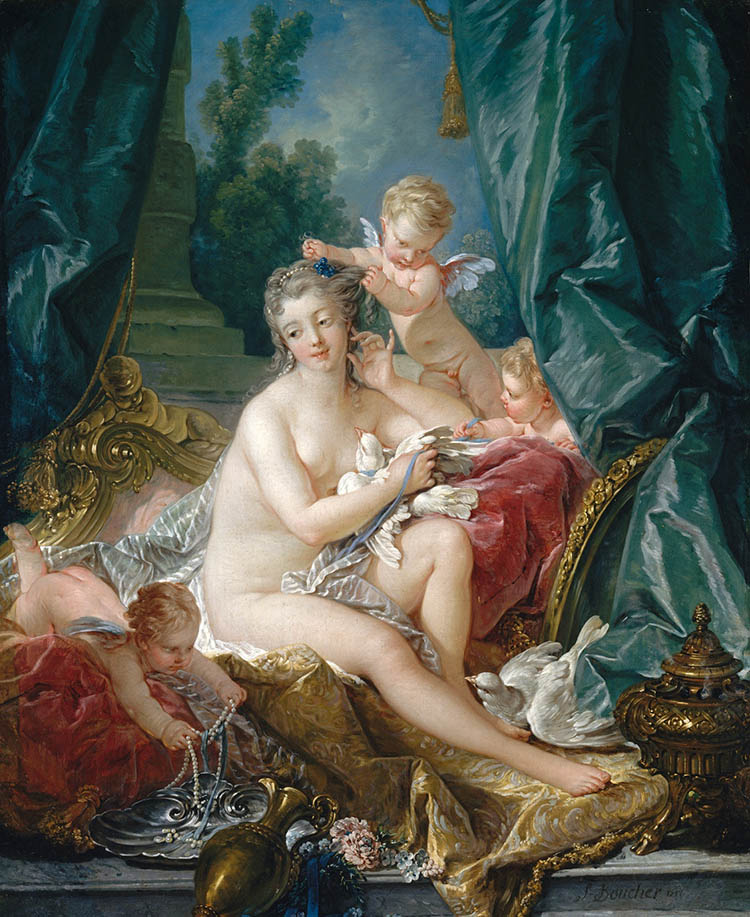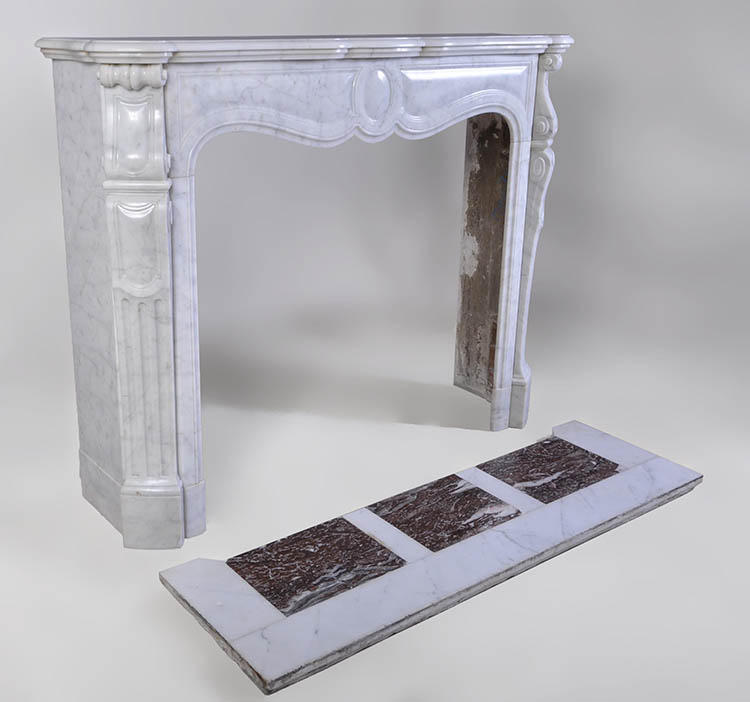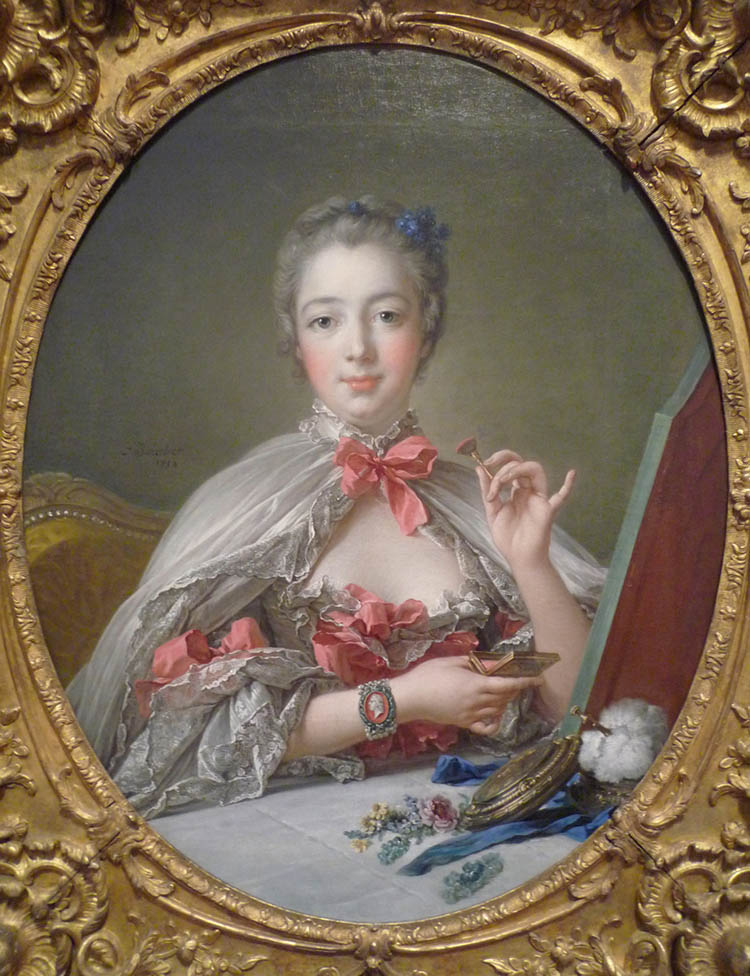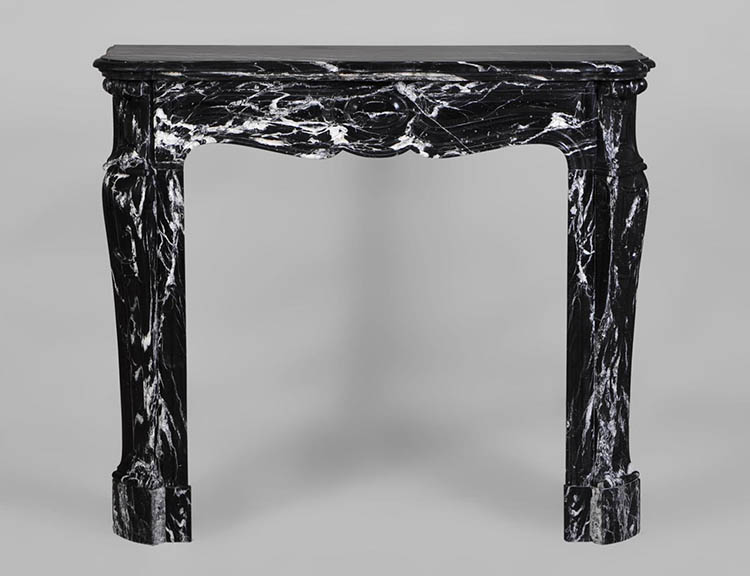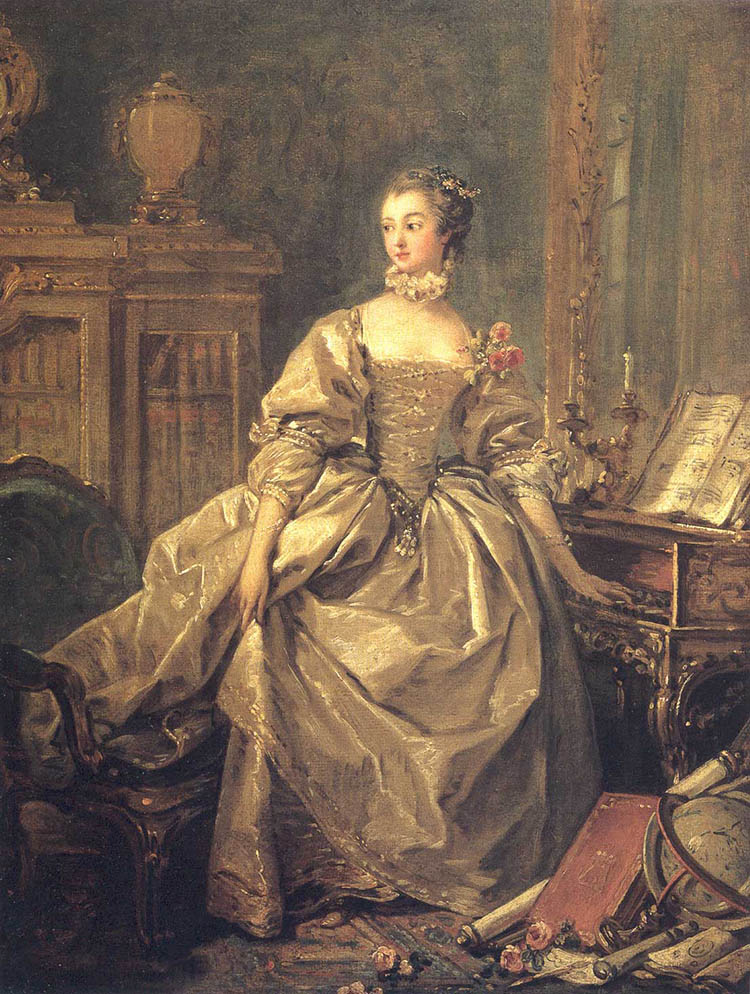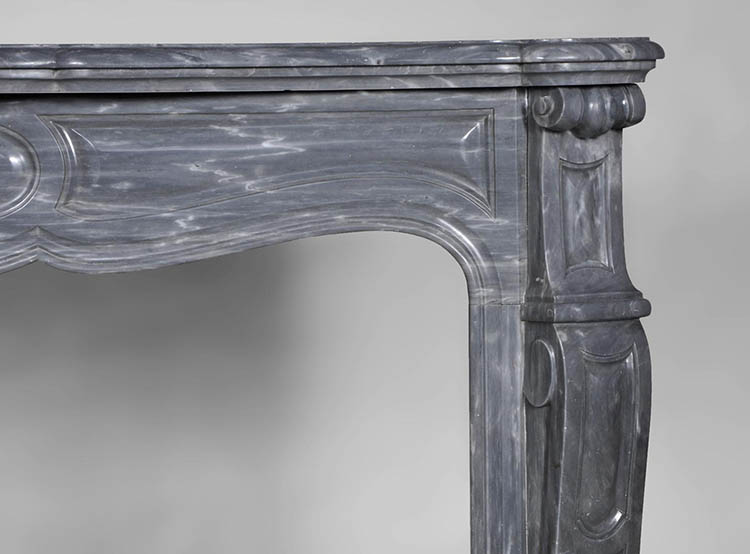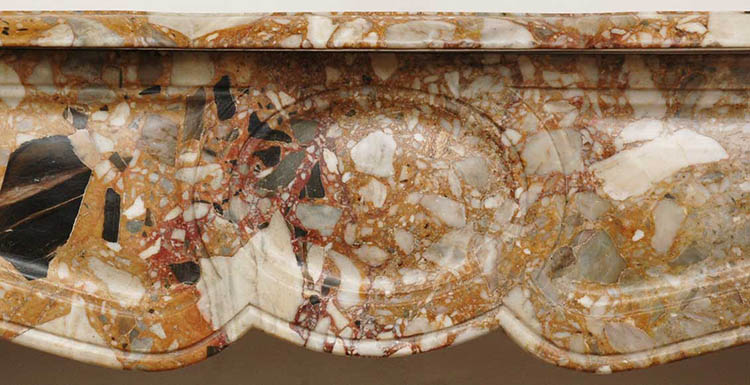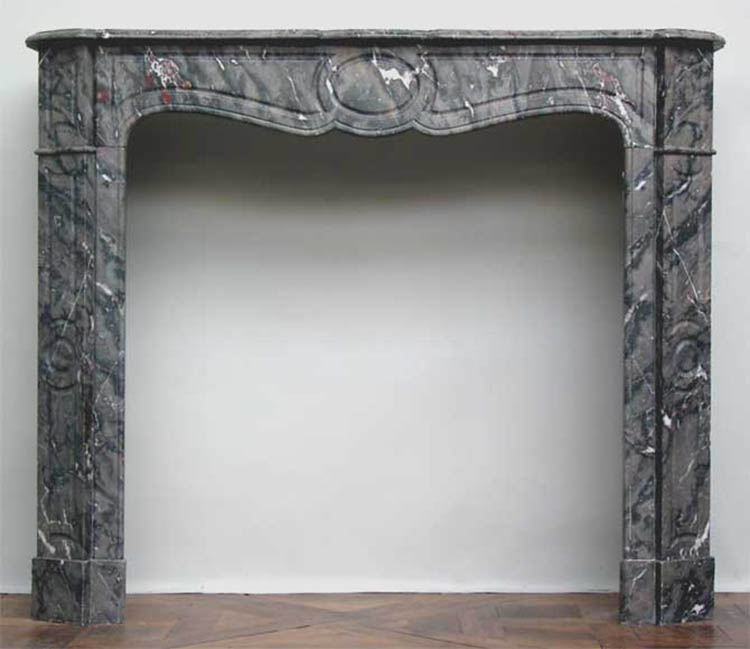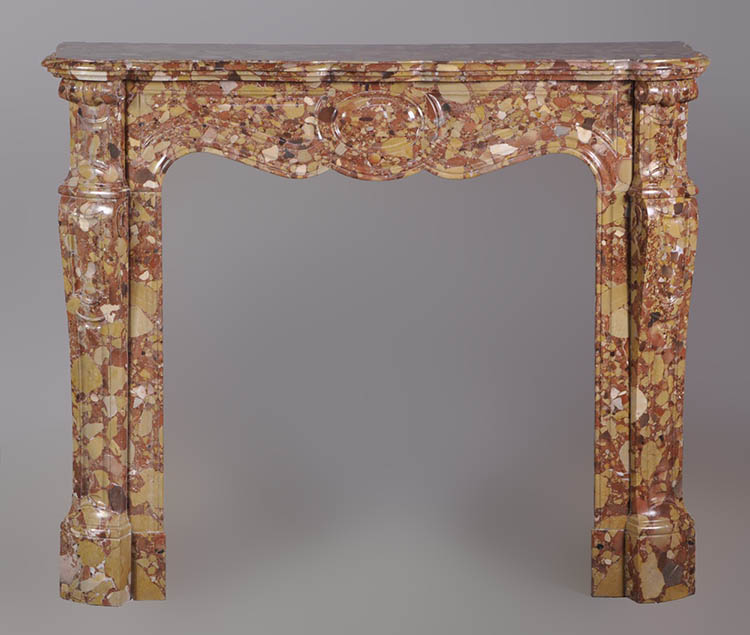Pompadour Fireplace
Download PDFHistoric of the Pompadour fireplace
The fireplace known as Pompadour, is inspired from the sinuous lines of the Louis XV style . It is produced from the middle of 19th century to adorn Parisians apartment . A typology of the fireplace is thus created, in order to respond to the high demand for furniture in the new Parisian flats. In reference to the one who transformed Paris under the Second Empire - the Baron Haussmann - those habitations are called ‘haussmanniennes”.
If it have the name of Pompadour, it is in honor of the muse of decorative arts, Jeanne-Antoinette Poisson, more commonly known under the name of Marquise de Pompadour (1721-1764). From 1745 to her death, she was the companion of the king Louis XV - being his mistress, friend and adviser. (See pictures n°2,6,9 and 12).
The Shape of the Pompadour fireplace
This fireplace, called Pompadour, is half-way between the simple fireplace from the standard production and the most refined styled-fireplaces.
It is characterized by two typological criteria :
- It presents an entablature and a shelf slightly curved.
- On the entablature and jambs is sculpted a circle surrounded by oblong moldings.
We could add that, generally, it has canted jambs.
The simplest model is called “grooves and panels” or in a more simple manner “flat”. It is marble panels subtly worked while laying flat, with little mass. (See pictures n°4, 5 and 15).
But the Pompadour fireplace can be closer to the styled-fireplace, of a more lavish production depending on its ornamentation and the choice of its marbles. Unlike the Pompadour fireplace with gooves and panels, the jambs of these models are long scrolled console feet adorned with volutes. The motif that it so typical of the Pompadour is present : molded panels that follow its curves (See pictures n°1,3,8,10,11,13,14 and 16).
The frontier between the Pompadour fireplace and the styled-fireplace can sometimes be very tenuous. It is the shell motif in the middle of the entablature that very often helps to differentiate a Louis XV style fireplace from his non-identical twin, the Pompadour.
The Louis XV style fireplace is often adorned with this central shell, but this motif can also be on the endblocks. In this case, we call this model Three Shells mantel. (See picture n°7).
The great fortune of the Pompadour, created a large variety of interpretations with marbles of various quality and colors. For a couple of examples, see the pictures n°3,5,8,10,11,13,14,15 and 16.
See our selection of Pompadour fireplaces available now at Marc Maison by clicking here.
See our sélection of antiques fireplaces available on our website.
Bibliography
J. Dubarry de Lasalle, Utilisation des marbres, Dourdan, H. Vial, 2000.
J. Feray, Architecture intérieur et décoration en France des origines à 1875, Paris, Berger-Levrault, 1997.
C. Gere, l'époque et son style : la décoration intérieur du XIXème siècle, Paris, Flammarion, 1989.
H. Guédy, Nouveau manuel complet du marbrier [...] accompagné d'un atlas, Les Encyclopédies Roret, Paris, 1880
P. Verlet, Styles, meubles, décors, Paris, Larousse, 1972, 2. vol.
P. Thrornton, l'Epoque et son style : la décoration intérieur 1620-1920, Paris, Flammarion, 1993.
G. Rousset-Charny, Les Palais parisiens de la Belle Époque, Paris, Délégation de l'action artistique, Hachette, 1990.
O. Nouvel-Kammerer, Le Meuble français : le style Napoléon III, année 1880, Paris, Massin, 1996.





